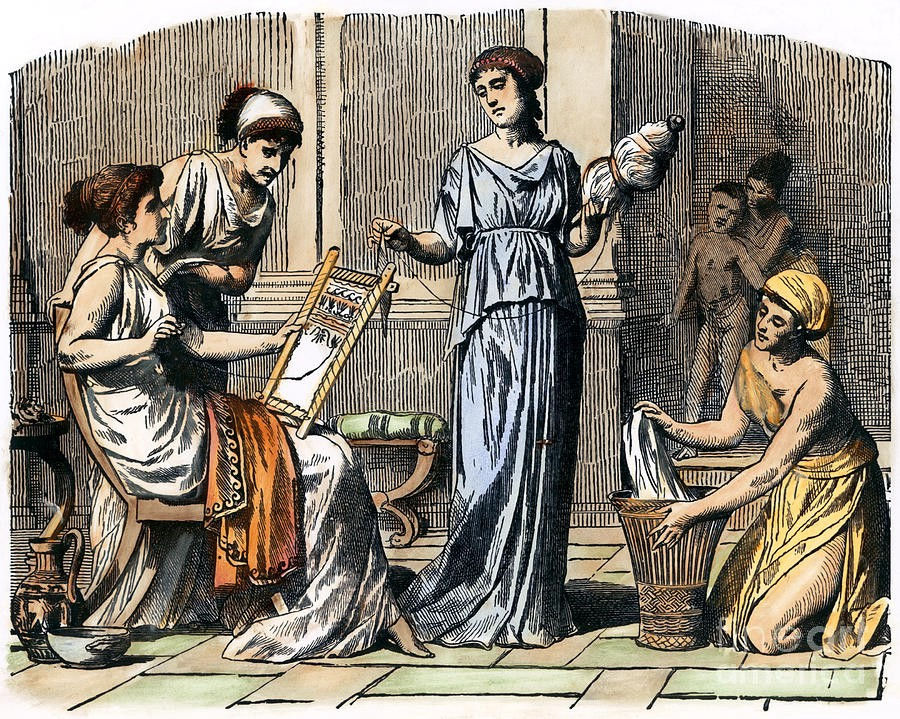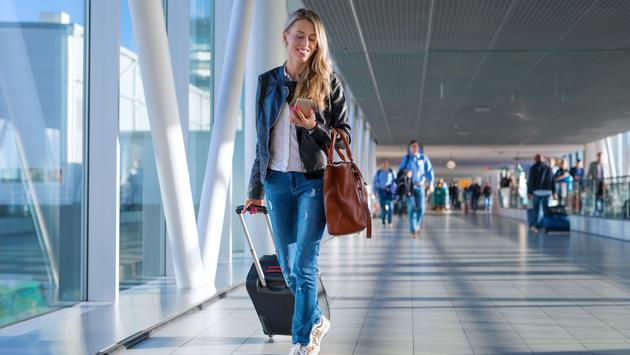How Perspective on Women Traveling Has Changed
- GlobeSisters Team

- Mar 4, 2023
- 6 min read
Updated: Mar 8, 2023
One thing that we cannot avoid discussing on women’s day is travel. Travel is still a space where women face unique challenges and obstacles. While women have made great strides in gaining more freedom and independence in recent decades, the world is still far from equal, and women travelers face additional barriers and risks that men do not.
The perspective on female travel has changed over time as women's roles and opportunities have evolved throughout history. By viewing how attitudes toward women’s travel have evolved, we hope to show new generations of young women how much progress we have made, inspire them to identify areas where more improvement is needed, and encourage more women to take the chance to travel and explore the world beyond their comfort zones.
Ancient Times

In ancient times, women's travel was often restricted. Traveling was seen as dangerous or inappropriate for women, and they were expected to prioritize their domestic duties. Therefore, women's travel was minimal and only applicable to special cases. In many ancient cultures, women were expected to stay close to home and not venture too far from their families or communities.
For example, in ancient Greece, women were not allowed to travel alone or without the permission of their male guardians. They were expected to stay within the confines of their homes and were rarely seen in public. In ancient Rome, women had more freedom to travel and participate in public life, but their activities were still closely monitored and restricted by male relatives. Similarly, in ancient China, women were confined to their homes and not allowed to travel without the permission of their male relatives. This was seen as a way to protect women's virtue and purity.
However, there were also cases in ancient times where women were able to travel, these were mainly due to economic and religious reasons:\
In ancient Greece, some wealthy women were able to travel for leisure or religious purposes, like the poetess Sappho who wrote about traveling to other Greek islands.
In ancient Rome, women of the upper classes were able to travel for leisure or to visit friends and relatives. The historian Suetonius mentions that Julius Caesar's mother, Aurelia, traveled extensively in Italy.
In Islamic societies, women were able to travel for pilgrimage or for education. The Moroccan traveler and scholar Ibn Battuta wrote about meeting women who had traveled long distances to study with famous scholars.
In East Asia, women of the upper classes were often confined to their homes, but some women were able to travel for religious purposes or to visit family members. The Japanese poetess and diarist Murasaki Shikibu wrote about her travels in Japan.
Overall, in ancient times, travel was seen as a male domain. Women who did travel were often accompanied by male relatives or chaperones and faced significant social and cultural barriers. Women who travel by themselves are scarce and are usually not married. In short, there is no middle ground for women; you’re either traditional and restricted, or you’re abnormal.
Middle Ages

During the Middle Ages, situations changed slightly. Women were able to travel for different purposes. Noblewomen, who often had more education than other women, were expected to participate in courtly life and attend important events. They traveled for diplomatic purposes, serving as ambassadors or mediators between different kingdoms.
Eleanor of Aquitaine traveled extensively during her marriage to King Henry II of England. In short, women’s lives were not mainly based on their male relatives anymore, which allowed them to travel more freely. The three main factors that contributed to this shift are:
1. Religion
During the Middle Ages, monasticism became popular among women. In short, women now had the choice of becoming nuns instead of marriage. With effort and experience, they could potentially rise to command a nunnery, which were usually large organizations that had dozens of affairs and people. Therefore, commanding a nunnery gave women power over others like never before. Although women could not become priests and have greater power, the shift in religious roles of women greatly extended women’s freedom to travel.
2. Economic
Women became more active in the marketplace, especially in Medieval Europe. A survey back in 1300 showed that 86 percent of guilds were open to female workers. Even though some of these opportunities required permission from the husband, this was a significant shift for women – they now had a space in the “workplace” outside of domestic responsibilities.
The sense of equality between genders was also brought up for the first time with regard to the training process. Women workers could train apprentices as well despite their gender, and no one seemed to think that a woman training a man was odd.
3. Political Factors
Surprisingly, women were also able to rise in the political world. During the middle ages, politics were dynamic and followed the family line, giving women the opportunity to take power in the absence of a male heir. This created a platform for the equality of powers.
It was frequent for women to rule as queens or rule as regents in the name of a minor child, both in kingdoms and smaller units. Frankly, women were still not able to participate in public political roles which were based on election. But having female rulers was a prominent shift from ancient times, and it greatly increased women’s ability to travel.
However, for most women, travels were still closely monitored and controlled by male relatives, and they were expected to maintain their reputation and virtue. Women's travel was still viewed by many as wrong and weird. Women who traveled alone or without the permission of their male relatives were often seen as suspects and could face social ostracism or worse. Additionally, many women were unable to travel due to poverty or lack of opportunities.
19th and 20th Century

In the 19th and 20th centuries, women had more opportunities and freedom to travel. While we’re lacking exact data and numbers, we can say that the number of women traveling during this period increased significantly.
Following this increase, people's views on women traveling were complex and varied. Women's travel was often seen as a way to broaden their horizons and gain new experiences. While women who traveled were sometimes viewed as daring and adventurous, they were also subject to social criticism and scrutiny.
This change of attitude was influenced by several factors. First, women's increased access to education in the late 19th and early 20th centuries allowed them to travel for academic purposes. Many women traveled abroad to study languages, art, and culture.
Moreover, many people believed that travel was an important part of education and personal growth and that women should have the opportunity to travel and experience different cultures. Some argued that travel could help women break free from traditional gender roles and gain independence.
In addition to the social factors, there were also specific technological factors involved. In the 19th century, women's travel was often limited to visits to family members or for health reasons. However, with the advent of new forms of transportation, such as railroads and steamships, women's travel opportunities expanded. Women began to travel for pleasure, to attend educational and cultural events, and even to work.
In the 20th century, women's travel continued to increase, particularly after World War II. Many women began to travel for business, to study abroad, and for leisure. The rise of commercial air travel made it easier and faster for women to travel to far-off destinations.
Still, there remained plenty of skeptics about women traveling. Critics saw women's travel as a threat to social order and stability. They believed that a woman's place was in the home and that traveling could lead to moral corruption and the breakdown of traditional gender roles.
Travel also remained a luxury for the wealthy. While women from this period realized that travel is a way to challenge gender norms and assert their independence, many women from lower classes had few opportunities to travel.
Today

Today, women's travel is generally seen as a positive and empowering experience. Women are encouraged to travel and explore the world, and there are many resources and communities available to support them.
Here are some of the main attitudes toward women's travel today:
Empowerment and personal growth: Travel is often seen as a way for women to gain independence and confidence, as well as to learn about new cultures and ways of life. Many women view travel as a way to challenge themselves and push beyond their comfort zones.
Breaking down stereotypes: Women's travel is also seen as a way to challenge stereotypes and preconceptions about women and their capabilities. By traveling and sharing their stories, women can inspire others and break down barriers.
Safety and security: While women's travel is generally supported and encouraged, there is also a growing awareness of the unique challenges and risks that women face while traveling. This has led to a greater emphasis on safety and security, and many resources are now available to help women stay safe while traveling.
Community and support: Women's travel is also supported by a vibrant community of female travelers, bloggers, and influencers. This community offers advice, resources, and support to help women plan and enjoy their trips. Moreover, there are many tools and resources to help inspire women to find a community and enjoy their trips such as GlobeSisters. For more information, check out GlobeSister’s article regarding Best Travel Tools.
Overall, the attitude toward women's travel is becoming more optimistic. While there are still challenges and risks, the growing support and resources available to women travelers are helping to make travel a more accessible and enjoyable experience for women around the world. As we celebrate women’s day and enjoy our freedom to travel today, it is important that we remember those who broke the ground for this to be possible. Learn more about women who challenged travel restrictions here.




Comments